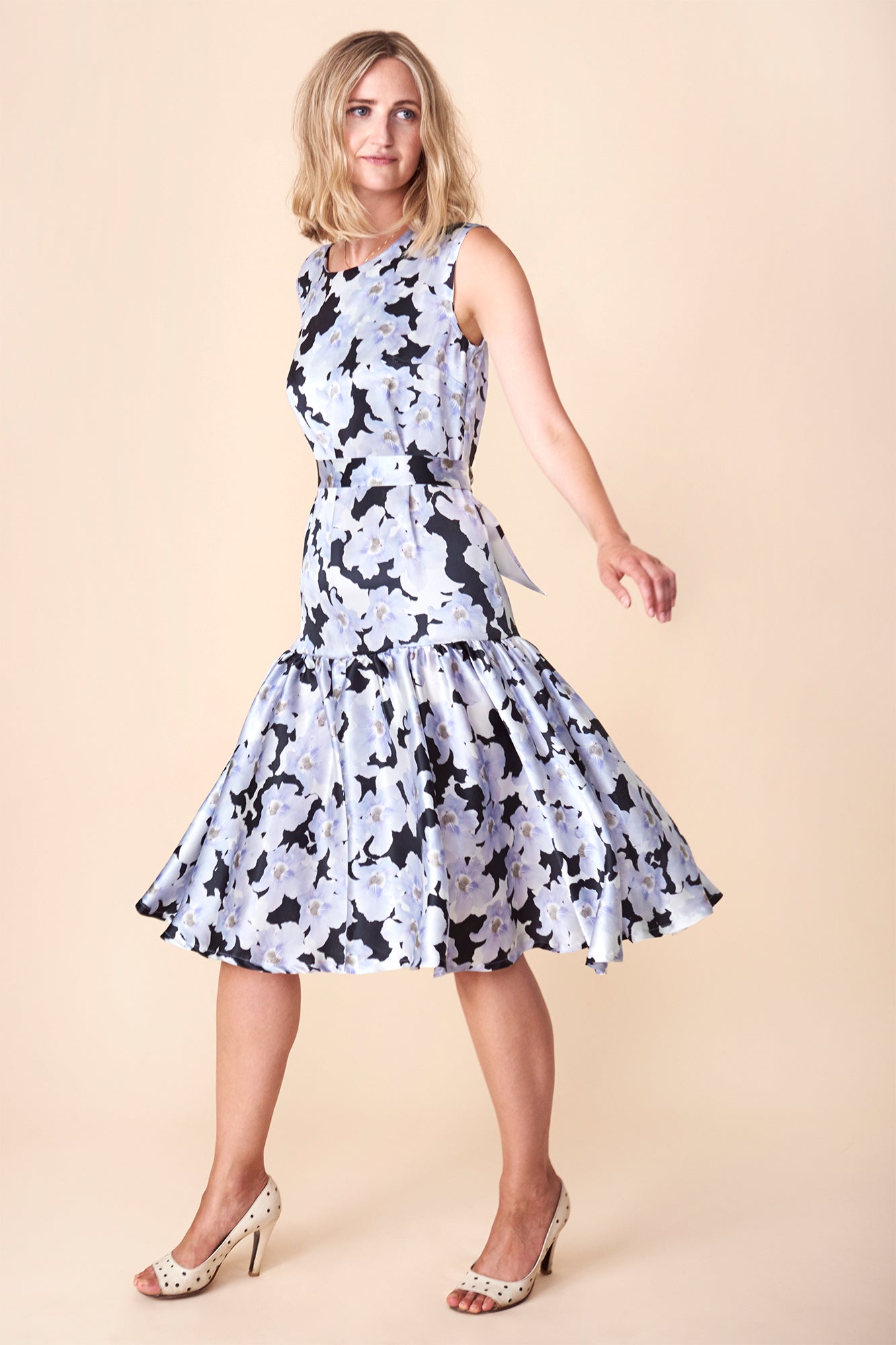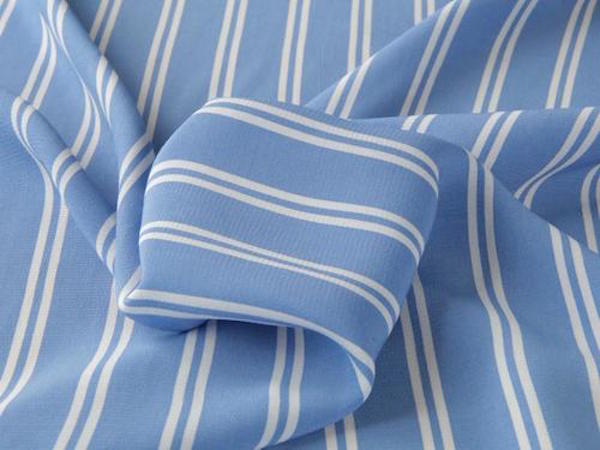Hello and welcome to the first step in the creation of your Eloise dress! Over the next series of posts, we'll be breaking down the making of the Eloise dress in minute detail, guiding you through the process, and holding your hand throughout, from fabric selection to hemming and everything in between.
**To be taken to all the posts in the Eloise Sewalong, please click here**

This first post is all about the fabric - what you should be looking for and where to find it*. The great news is that Eloise will work with a huge variety of woven fabrics, meaning that this is the perfect first time dress project made from a stable, beginner friendly fabric like cotton or linen, but equally a meaty make for the more experienced sewist if made from a more challenging fabric like viscose challis or silk chiffon...
Fabrics...
Eloise has been designed to work with a variety of light and medium weight woven fabrics. Opt for linen, soft cottons (think batiste, double gauze, chambray, seersucker, lawn, broderie, swiss dot etc), drapey and/or floaty silks and rayon. Fabrics with more structure will lend a more polished, almost mod-like vibe, especially when the waist tie is omitted. Go for jacquard, taffeta or wool crepe.
Linen
Linen is having a huge moment right now. So huge that it's wildly inaccurate to call it a moment; it's more like an insta mega trend that is showing zero sign of tiring itself out. Linen is everywhere in fashion, which is great news for us as fabric retailers respond accordingly. The even better news is that linen is a breeze to sew with, straightforward to care for and a dream to wear (as long as you don't mind a little inevitable creasing).
The main thing to consider here is the weight. Linen can come super lightweight, and upholstery weight heavy. Super light and medium will work great for Eloise, but we need to avoid the heavier linens as they will be too stiff. Linens blended with viscose fibres will have a little extra drape and movement, which is extra great!
For the most extensive selection of the most exquisite linens we've ever worked with, The Fabric Store is where it's at. It ain't cheap (and neither are those customs fees if you're ordering from the UK), but it's worth it.

This mouth watering blush pink linen was from The Fabric Store
For a more economical option, we love Rainbow Fabrics. It's not always guaranteed what they'll have in stock as they tend to buy a lot of deadstock, but when they get their white Irish linen in we recommend you buy up as much as you can! White linen takes fabric dye really well, so we used their white linen and dyed it blue for this Eloise sample we made for the shoot:

Other linens we're loving right now:

Pink gingham linen cotton mix from Fabric Godmother
*

Floral linen viscose mix from Like Sew Amazing
*

Floral linen cotton mix from Fabrics Galore
*

Crinkle linen from Blackbird Fabrics
*
Soft cottons
The reason we say "soft cottons" here, and not just "cotton", is that we want to encourage you to really consider the feel and handle of the fabric as it relates to the design of this pattern. The fit of the dress is unstructured, gently cinched at the waist, designed to move with and alongside your body. The gathers are soft and floaty and the overall feel is one of comfortable elegance. These are the elements that need to be considered when choosing fabric. Avoid anything stiff or paperlike! Think more along the lines of dreamy cottons like double gauze, Swiss dot, batiste, lawn and lightweight chambrays.

Nani Iro double gauze at The Drapers Daughter
*

Kokka double gauze at Ray Stitch
*

Swiss dot cotton at Minerva Crafts (they have loads of colours not just white!)
*

Liberty cotton lawn at Fabrics Galore
*
Woven viscose
For a floaty, unstructured dress such as Eloise, you can't really go wrong with viscose. Man-made from cellulose fiber, and also referred to as rayon or viscose rayon**, viscose breathes like cotton and drapes like silk, and thanks to the surge in sewists moving away from the novelty cotton obsession of 2014 and into more grown-up, RTW-like fabrics, it's now easier than ever to find great quality viscose in an infinite array of colours and prints. Viscose challis is the softer, more lightweight kind (think floaty button down slip dresses of the 90s), and viscose crepe is a little heavier, more substantial and has that nice matte crepe texture, but also a great choice for an Eloise made to be worn in colder months.

Eloise sample made in a viscose challis from Rainbow Fabrics
You may have heard people talking a lot about cupro and tencel these days - these are basically types of rayon fabric (fabric that has been man-made using cellulose (plant) fibres; see asterisk at the end of this post), but that have been produced more sustainably/consciously than traditional rayon or viscose. In a nutshell, fabrics like cupro, tencel, modal and lyocell are produced in a "closed loop", meaning that all the water and chemicals used are recycled and used again instead of being wasted and flushed out into the surrounding environment.
The important thing to consider here is that you're looking for woven viscose/rayon etc, not the stretchy knit kind that you would be using to make stretchy T-shirts and cosy lounge pants.
Danish haberdashery Stoff & Stil always has a pretty delicious collection of woven viscose...



As does Fabric Godmother...



Silk
Like cotton, the word silk obviously covers a huge amount of very different fabrics. What we're aiming for is fluidity, drape and movement. Look for silk satin, sandwashed silk, charmeuse, crepe de Chine and the like. We used a heavenly silk satin from Classic Textiles on London's infamous Goldhawk Road for our photoshoot sample and we couldn't have been more in love!

How about this deliciousness from Liberty of London:

We realise that making your dress from something as luxurious and bank breaking as silk is not something to be taken lightly. Which is why we strongly recommend that you buy your silk in person so you can get a truly accurate idea of the colour, pint scale and translucency.
In the UK we love Classic Textiles, Unique Textiles, UK Textiles and Goldbrick Fabrics on Goldhawk Road, Broadwick Silks and The Silk Society in London's Soho, and the holy grail that is Joel and Son Fabrics.
Outside of the UK we love The Fabric Store - based in New Zealand but they also have shops in Australia and LA, and in the US we love Promenade Fabrics (New Orleans) and of course Mood - we've never actually been to Mood but know from many, many reliable sources that it is aweeessooommmmeeee! One day we'll get there... *sigh*...
Other drapey fabrics
By now you probably have some ideas hatching as to the kinds of fabrics that will bring out the best in your Eloise. Other examples of drapey fabrics that haven't fallen into the linen/cotton/viscose/silk categories above, but that are also totally workable are drapey polyesters, like peachskin and poly crepe.

We love this designer poly crepe at Fabrics Galore
A word about using more structured fabrics
At her foundation, Eloise is actually a very simple shift dress design. You can achieve a completely different look - think more along the lines of 60s mod - simply by opting for a more structured fabric and leaving out the waist tie (or not! Up to you). This will work best for the drop waist cocktail length of variation 1, and the knee length shift of variation 2. Structured fabrics will not really work for the maxi variation 3.
We love how our cotton gingham shift dress Eloise turned out, and can really imagine taking it one glamorous step further with brocade, jacquard or taffeta. Wool crepe is another great option for a cosy, day-smart Eloise dress.

*Please bear in mind that as we are a UK based sewing pattern company, most - but not all - of the fabric stores we know well enough to recommend here are also UK based.
**Rayon is fabric that is made from any type of cellulose (plant) fiber. Viscose, or viscose rayon, is made by the same process, but specifically with wood pulp or cotton linter. Viscose is therefore a type of rayon fabric. They both possess similar qualities of silk like drape and breathability. Cupro, tencel, modal and lyocell are other examples of rayon fabric, but they are produced in a "closed loop", meaning that all water and chemicals used during the manufacturing process are recycled and used again instead of being flushed away into the surrounding environment.

Comments on this post (1)
Just wondering…I’m thinking this pattern is somewhat similar to the beautiful “The Vampires Wife” dresses. What do you think about using velvet for this dress….
https://thevampireswife.com/collections/shop/products/emerald-velvet-3-4-festival-dress
— Melanie Krueger